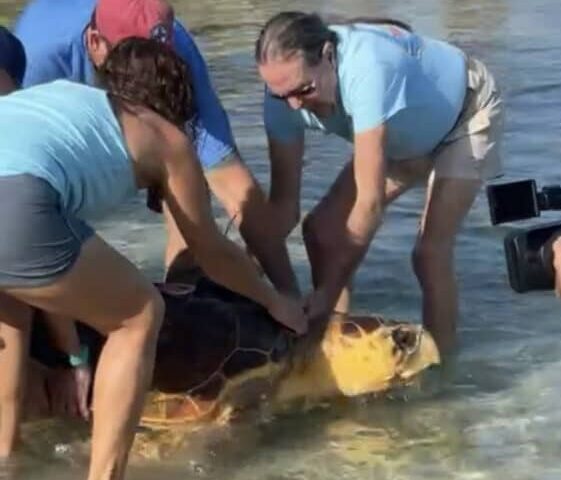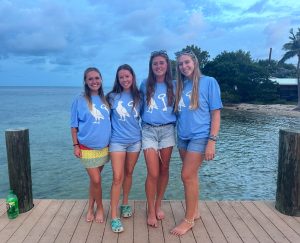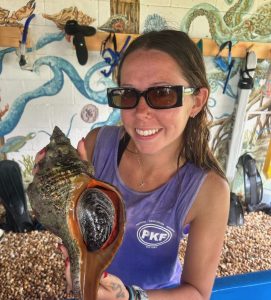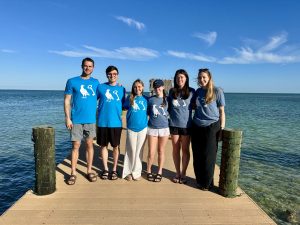On February 18, 2022, Sheldon, a 230lbs adult male Loggerhead Sea Turtle, was released back to the ocean from the shore of Pigeon Key. After 2 weeks of some much-needed treatment, rest, and relaxation at Marathon’s Turtle Hospital, Sheldon was deemed healthy enough to return to the wild.
Sheldon was the unfortunate victim of derelict or ghost fishing gear after being entangled in an abandoned crab trap line. According to an article on the NOAA website, derelict fishing gear includes nets, lines, traps, and any other fishing equipment that is lost and abandoned in the ocean. In recent years, this problem has become increasingly devastating as we see modern fishing gear with more longevity. Gear is now largely made of synthetic materials which take much longer to break down when left in the ocean. It has recently been estimated by the World Wildlife Fund that up to one million tons of nets enter the ocean each year.
Sheldon was rescued from his ensnarement by a wonderful team at the U.S. Coast Guard Marathon Station. This group of Coast Guards officers came to Pigeon Key and were part of the release team which also included the Turtle Hospital and Pigeon Key staff.
There are six species of sea turtles found in the waters surrounding the United States and all are listed and protected under the Endangered Species Act of 1973. The Loggerhead Sea Turtle was added to the list in 1978 due to over-harvesting of turtles for leather production and food. These protections and various laws have led to the end of sea turtle hunting in the United States. Yet population trends show these marine reptiles are still very much at risk due to bycatch, derelict fishing gear, and habitat destruction which results in loss of nesting beaches.
Turtle populations also remain low because of the very low survival rate of hatchlings. Due to predators, light pollution, and other factors it is estimated that only 1 in 1,000 to 1 in 10,000 sea turtle hatchlings survive into adulthood. These turtles do not become mature enough to reproduce until they are at least 17 years old which leads to slow population recovery. Because of their low numbers, it’s incredibly important that a healthy, mature loggerhead sea turtle, is able to participate in the mating season as the species attempts to recover from its endangered status. Mating season of loggerhead sea turtles is April to September so Sheldon was released just in time!
During his treatment at the turtle hospital, Sheldon was also equipped with a satellite transmitter tag by the research department of the Summerland Key Mote Marine Laboratory. Track Sheldon here!




